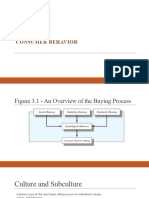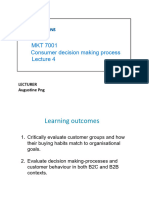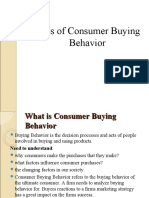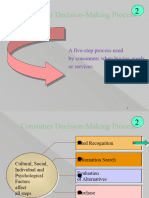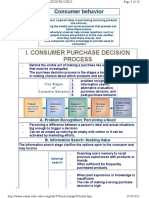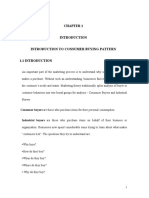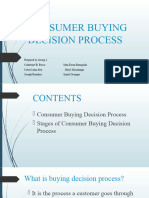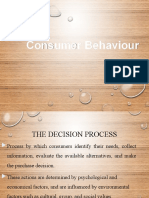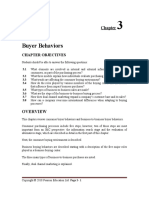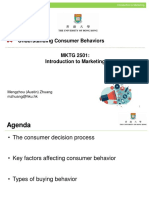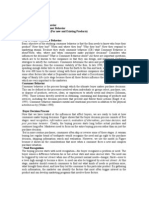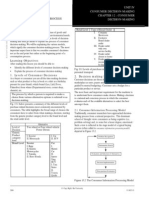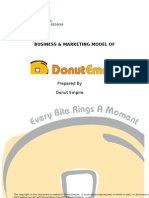0% found this document useful (0 votes)
19 views41 pagesCourse 3 - Consumer Behavior
The document discusses the consumer buying process which involves 5 steps - problem recognition, information search, evaluation of alternatives, purchase decision, and post-purchase evaluation. It provides details on each step, including the types of information search and factors that influence the search and evaluation processes.
Uploaded by
RGN 11E 6 ANANYA GARGCopyright
© © All Rights Reserved
We take content rights seriously. If you suspect this is your content, claim it here.
Available Formats
Download as PDF, TXT or read online on Scribd
0% found this document useful (0 votes)
19 views41 pagesCourse 3 - Consumer Behavior
The document discusses the consumer buying process which involves 5 steps - problem recognition, information search, evaluation of alternatives, purchase decision, and post-purchase evaluation. It provides details on each step, including the types of information search and factors that influence the search and evaluation processes.
Uploaded by
RGN 11E 6 ANANYA GARGCopyright
© © All Rights Reserved
We take content rights seriously. If you suspect this is your content, claim it here.
Available Formats
Download as PDF, TXT or read online on Scribd
/ 41




